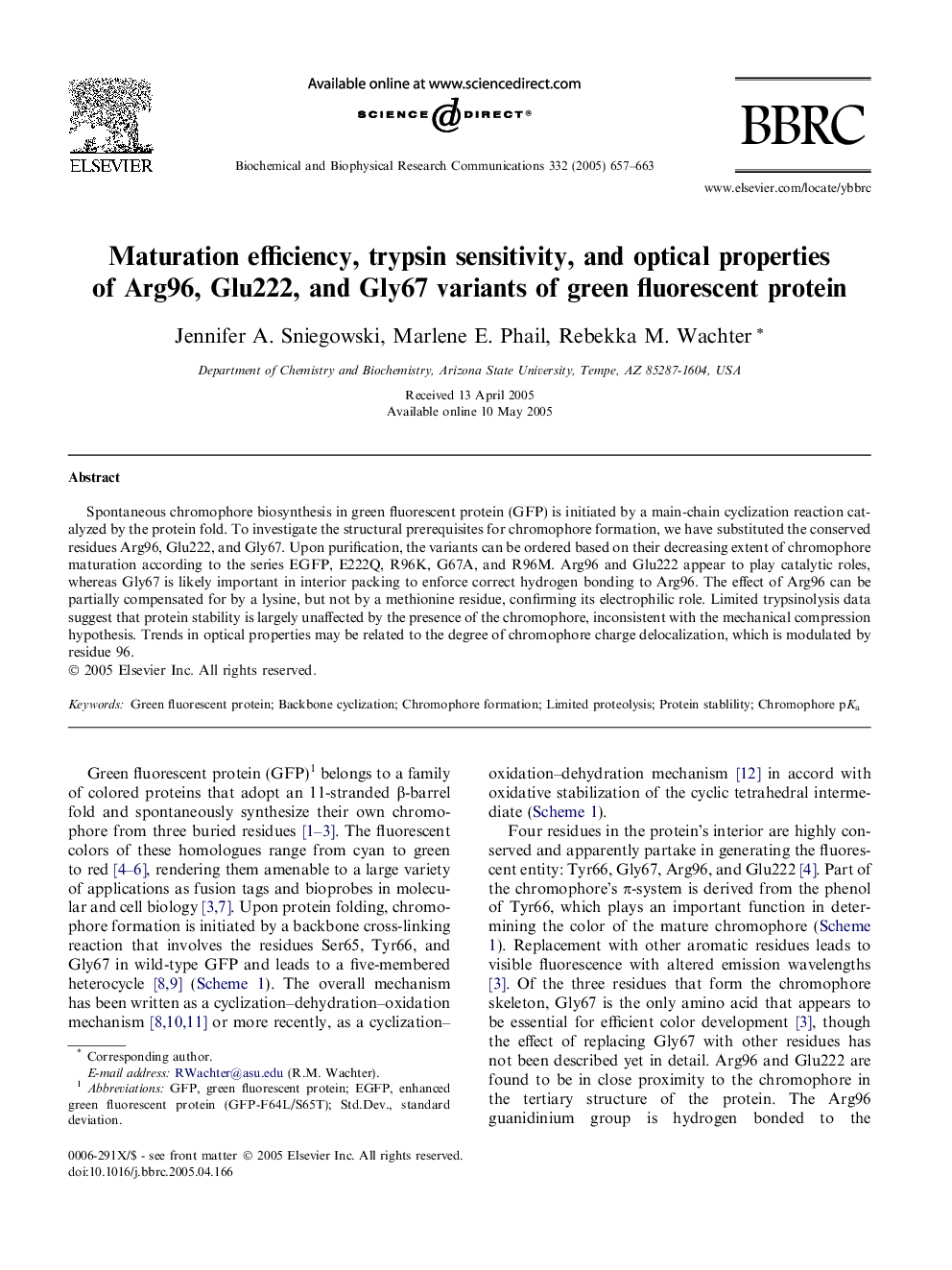| Article ID | Journal | Published Year | Pages | File Type |
|---|---|---|---|---|
| 10767678 | Biochemical and Biophysical Research Communications | 2005 | 7 Pages |
Abstract
Spontaneous chromophore biosynthesis in green fluorescent protein (GFP) is initiated by a main-chain cyclization reaction catalyzed by the protein fold. To investigate the structural prerequisites for chromophore formation, we have substituted the conserved residues Arg96, Glu222, and Gly67. Upon purification, the variants can be ordered based on their decreasing extent of chromophore maturation according to the series EGFP, E222Q, R96K, G67A, and R96M. Arg96 and Glu222 appear to play catalytic roles, whereas Gly67 is likely important in interior packing to enforce correct hydrogen bonding to Arg96. The effect of Arg96 can be partially compensated for by a lysine, but not by a methionine residue, confirming its electrophilic role. Limited trypsinolysis data suggest that protein stability is largely unaffected by the presence of the chromophore, inconsistent with the mechanical compression hypothesis. Trends in optical properties may be related to the degree of chromophore charge delocalization, which is modulated by residue 96.
Related Topics
Life Sciences
Biochemistry, Genetics and Molecular Biology
Biochemistry
Authors
Jennifer A. Sniegowski, Marlene E. Phail, Rebekka M. Wachter,
